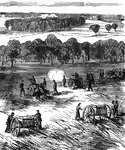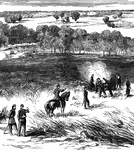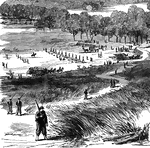Clipart tagged: ‘General Jackson’

Commencement of Bull Run
"The Confederate forces under General Jackson advancing upon the Rapphannock Station at the river. Federal…

Valley of Chickahominy
"Valley of the Chickahominy, looking southeast from the vicinity of Mechanicsville, the scene of the…

Valley of Chickahominy
"Valley of the Chickahominy, looking southeast from the vicinity of Mechanicsville, the scene of the…

Valley of Chickahominy
"Valley of the Chickahominy, looking southeast from the vicinity of Mechanicsville, the scene of the…

Valley of Chickahominy
"Valley of the Chickahominy, looking southeast from the vicinity of Mechanicsville, the scene of the…

Pontoon bridge
"General Fremont's Division crossing the Pontoon Bridge over the Shenandoah River in pursuit of the…

Crossing of Shenandoah River
"Colonel Pilson's Battery shelling the rear guard of the Confederate General Jackson's Army, at the…